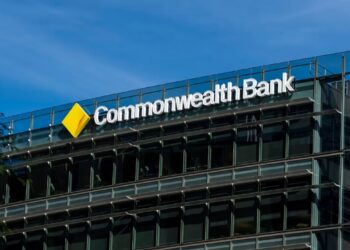Paul Fiani is not someone who becomes quickly uncomfortable.
But as we start the interview he glances at the voice recorder and requests for it to be turned off.
The topic of conversation is his decision to set up Integrity Investment Management and Fiani is concerned he may blurt out something controversial.
He excuses himself by pointing out he still has legal restrictions.
“In general, people start their own fund management business from a desire to do things their own way and to try to escape the bureaucracy of the larger organisations,” Fiani, who is both managing director and head of equities at the boutique fund manager, says.
“My situation was a bit different, but those things were still true.”
Indeed, his situation was just a tad different.
Fiani left his job as UBS head of Australian equities after he had used the 6.5 per cent stake in Qantas he managed for clients to block the takeover of the airline by consortium APA.
The move was considered outrageous by his opponents and courageous by his friends, but Fiani has always maintained he was just acting in the best interests of his clients.
When he made the decision to establish Integrity, the praises of the boutique model were still being loudly sung.
The number of new fund managers had risen quickly in the previous years and the model was almost seen as a recipe for high returns on investment.
But the onset of the sub-prime crisis ended an era of uninterrupted growth and returns started to slip as equity markets gave way. Some funds have seen their worst nightmare come true.
Fund performance
Data supplied by ratings agency Morningstar shows that, with one exception, boutique funds have seen returns fall into negative territory in the 12 months to June 30.
On average, funds have been able to contain the damage and performed in line with industry indices. But there is a large group that has posted total negative returns of over 30 per cent or more.
These are not only significant drops compared to the market average; they are also often lower than the funds’ own benchmarks or investment objectives.
The Adam Smith Small Company Fund is not the worst performer in the Morningstar boutique small cap fund table, but the negative return of 40.4 per cent in the 12 months to June 30 certainly provides food for thought.
The fund uses the S&P/ASX Small Ordinaries Accumulation Index as a benchmark, which has returned a negative 20.7 per cent over the same period.
“[The fund] was underweight in resources and overweight in financials. Obviously that position wasn’t favourable in comparison with the index,” Adam Smith Asset Management chief operating officer Tim Gapes says.
Gapes says that as at December 2007 the fund had outperformed the small caps index by more than 6 per cent a year in the first four years of its existence. Only since January performance slipped.
“We haven’t lost the plot, it’s just that these things do happen. The credit crisis . really came as a bolt out of the blue. You can see it coming, but you can’t see what the full impact will be,” Gapes says.
Melbourne-based Armytage Private has also recorded substantial negative returns.
Its Strategic Opportunities Retail Fund is a mixture of large caps, small caps and property-related stocks.
The exposure to small caps and banks, and its underweight position in resources has led to a negative return over the 12-month period of 35.1 per cent.
The objective is to create an absolute return of 10 per cent a year, but so far the fund has realised only 1.3 per cent a year since its inception two years ago.
Armytage investor director and chief executive Campbell McComb says while investors have to look at the long-term returns, the firm decided to make some adjustments to the fund’s mix.
The exposure to small caps, which at an earlier stage was nearing 30 per cent, was reduced to 15 per cent. At the same time, the cash component was increased to almost 15 per cent.
“The recovery in the smaller end of the market is likely to be still 12 months away. Whereas with the large caps, you are starting to see a bit more investor interest starting to feed back in, with the lower Australian dollar, lower oil price and the potential of a rate cut,” McComb says.
SG Hiscock and Company saw its IC2E fund return -33.3 per cent over the 12 months to June 30. Chief executive Steve Hiscock says this is due to the fact it is an industry-specific fund – it invests in companies that have strong intangible assets, including brands, licences and patents – and the negative return merely reflects the development in this market.
Hiscock points out the company’s flagship fund, the Absolute Return Trust, which has almost $400 million under management, has shown an almost square performance, while the SGH20 fund did even better with a positive return of 10.65 per cent over the 12-month period.
Boutique model to blame?
The performance figures of boutique funds show they are certainly not immune to a market downturn and this raises the question of whether the extent of the earlier buoyancy among financial planners about the boutique structure was justified.
One could even be as churlish as to argue their specialised approach leaves them open to larger falls in portfolio values than funds that follow indices more closely.
BT Investment Management is one the few large fund managers that has embraced the boutique model.
It operates funds along similar lines to boutiques and has remuneration programs in place that mimic the situation of equity stake holders.
BT investment Management head of sales and marketing Martin Franc says it’s not the boutique model that is to blame.
“In falling markets there is nowhere to hide. It then becomes a relative game; relative to your benchmark and relative to your peer group,” Franc says.
Many boutique funds also argue a one-year performance says very little about the underlying investment strategy.
Although this is certainly a valid argument, many boutique funds have not been around for more than a few years.
Not every investor is happy to stand at the sideline and see whether prices will go up again.
Hiscock counters by saying boutique funds not only offer sound investment choices, they also are better placed than some of the larger players in the market to weather the storm.
“The people that don’t do very well in the current environment are going to be the larger organisations with significant overheads,” he says.
“The whole thing about boutiques is to keep your costs low so that you can cope with lean times as well as good times.”
McComb also points out boutique fund managers are more engaged with their business because off their equity stake in it.
“The beauty of a boutique is growing something that is your own, as opposed to growing something that is someone else’s,” he says.
Client feedback
Boutique funds say the response of clients to the negative returns generally shows understanding.
“The more sophisticated end of the market knows and understands, and looks at the performance of the banks, which are down 35 per cent on a 12-month basis,” McComb says.
“The [benchmark] index has been unduly upheld by an overweight BHP position.”
Gapes is confident the negative returns are only paper losses and expects the portfolio’s share prices to triple in the coming months.
“There is a huge upwards potential. We’ve actually had clients who have given us more money to invest because they can see the value in the current valuations,” he says.
The 12-month period discussed in this article is just a snapshot of the market and many fund returns improved in July. For example, Gapes says the Small Company Fund was 4-6 per cent ahead of its benchmarks in mid-August.
Boutique fund managers, therefore, believe the 12-month period was only a glitch in an overall successful system.
“There are many, many really interesting opportunities at the moment. Share prices have gone down a long way and many companies have been unfairly tarnished. That presents fantastic long-term buying opportunities,” Hiscock says.
He says he expects in the long term to only see more boutiques set up.
“A downwards equity market makes it always difficult for people to leave an established organisation. So you might see a slowdown in the number of new boutiques. But the desire to control your own destiny is in all of us and so you might expect the creation of new boutiques to continue,” he says.
Fiani, whose funds have seen only moderate negative returns and have outperformed their benchmarks, is also confident boutiques are here to stay.
“There will be more boutique funds established and this will continue to be driven by both the desires of investment professionals to conduct their jobs independently and the desires of clients to ensure their managers have skin in the game and no conflicts of interest,” he says.
“Clients are not interested in paying fees for the marketing of a brand name; they pay fees for investment management.”







